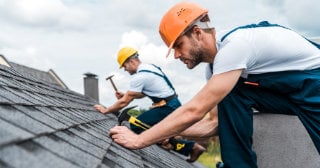A peril is the cause of the loss (damage or injury). A covered peril means you have insurance against the peril that caused the loss. What is covered by your Homeowner's Policy will be determined by what level of perils are included.
3 levels of perils.
1. Basic Form Perils
While there are property polices, such as a Standard Fire Policy, that cover a more limited number of perils, the basic form perils are the most limited of the Homeowner's package policies.
Perils Covered
- Hostile fire – any fire not contained within its intended boundaries. For example, a fire contained in your fireplace is within its intended boundary, however, should a log roll out onto your carpet it is no longer contained and is considered hostile.
Hostile fire also includes damages caused by the fire department and smoke damage caused by the hostile fire. - Removal – should your home be damaged by a covered peril it is likely you will need to remove valuables and furniture off the premises to secure it and avoid further loss or damage being done. Because your property is no longer secure in your home it is at a greater risk of being damaged or stolen – it is in peril. (All risk – see special form - coverage is applied to removed property for up to 5 days at each location to which the property is removed.)
- Lightening – if your property is struck by lightening
- Windstorm – damage cause by unusually strong winds
- Civil Commotion
- Hail – damage caused by hail
- Aircraft
- Vehicle – If a vehicle causes damage or injury to you, your family, or your property. For example, a 3rd party vehicle hits your garage door, causing the door to be damaged.
- Volcanic action
- Explosion
- Riot
- Vandalism and Malicious Mischief (excluded if property is vacant for 30 consecutive days).
Perils Excluded
- Theft
- Nuclear reaction
- Earth Movement
- Flood
- War
- Civil Authority
- Power Interruption away from the premises
- Vandalism and Malicious Mischief is excluded if property is vacant for 30 consecutive days.
- Neglect to save and protect from loss. This is an important exclusion as it speaks to the duties of the insured to protect their property. For example, if you have a hostile fire and you do not call 911 but instead watch your home burn down to nothing you have neglected to save or protect your property from loss. Had the fire department been called it is likely damage would have been mitigated.
2. Broad Form Named Perils
Broad form perils includes all the perils covered in the basic form level and adds a few more covered perils.
Perils Included
- All the perils listed in Basic Form
- Broader explosion and broader smoke coverage
- Glass Breakage
- Damage caused by burglars
- Falling objects
- Weight of ice, snow, and sleet
- Collapse
- Artificially generated currents
- Water damage caused by freezing of or discharge from a plumbing, heating, or cooling system.
Perils Excluded
- All perils excluded in Basic form
- Damage caused by agricultural or industrial smudging. For example, if you live near an industrial plant and you paint your home white, pollution from the industrial plant could cause your white paint to turn grey over time.
3. Special Form Perils
Special form is often referred to as “all-risk perils” as it covers all forms of loss unless specifically excluded. While your policy may have additional exclusions depending on your location and structure of your home, these perils are almost always excluded:
- All perils excluded in Basic Form
- All Perils excluded in Broad Form
- Damage caused by wear, tear, rot, deterioration, settling, cracking, mold, rust, inherent vice, discharge of pollutants.
- The cost of repairing mechanical breakdown
- Damage caused by birds, vermin, rodents, insects, or domestic animals.





